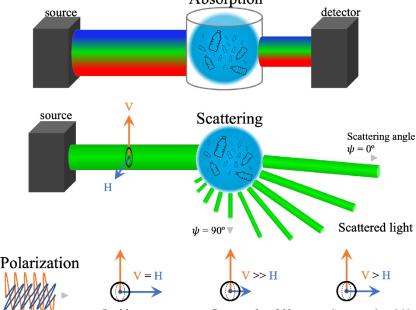
06. Instrumentation Laboratory
2025 topic: Determination of Microplastics in Bottled Drinks
Coordinators: Dr. Gregory Edens and Dr. Diane Krone
Important: All documents and files for your experiment must be submitted by April 18th, 2025!
This competition aims to build and characterize an instrument that uses your smartphone to capture images of microplastic particles from bottled drinks, such as water; these images will then be used to characterize and quantify the particles.
Background information may be found in the following articles:
-
Inexpensive Adaptations of Basic Microscopes for the Identification of Microplastic Contamination Using Polarization and Nile Red Fluorescence Detection
Amelia B. Labbe, Clive R. Bagshaw, and Lisa Uttal, J. Chem. Educ. 2020, 97, 4026−4032
-
Detecting and Quantifying Microplastics in Bottled Water using Fluorescence Microscopy: A New Experiment for Instrumental Analysis and Environmental Chemistry Courses
Austin Scircle and James V Cizdziel, J. Chem. Educ. 2020, 97, 234-238
-
Lighting Up for Learning – Fluorescence Analysis of Microplastic Particles by Secondary School Students using Nile Red
Alina Majcen, Sebastian Tassoti, and Philipp Spitzer, J. Chem. Educ. 2023, 100, 4007-4012
Teams may opt to modify a microscope or to build a fluoroscope using a cardboard box. However, in no case will lasers be allowed—only LED light sources.
Students will submit a report before the competition describing their instrument design and why they went with that design, as well as any evolution of their plans. The report should include adequate theory of fluorescence and fluorescence spectroscopy for detection; provide definition and sources of microplastics; address impacts of microplastics on human health; and discuss the rationale for determining microplastics in bottled drinks.
As well, report should include pictures taken with team members’ smart phones of microplastics determined with their instrument. Report must also include a picture of the homebuilt instrument. Report must address safety features of chemicals they are using. Team members must wear personal protection equipment at all times in the lab. Students should use caution with LED flashlights.
At the competition, teams will set up their homemade instruments and demonstrate their operation to the judges. During the competition teams must take pictures using their smartphone of the microplastics in those samples described below; these pictures and their analysis will be submitted for judging.
Samples for analysis during the competition:
-
Control sample to demonstrate that the instrument is working
-
Blank sample to demonstrate absence of microplastics
-
Standard sample that will be used by the judges for validation of instrument operation and quantitation
-
Common samples of bottled drink to be analyzed by each team
-
How many microplastic particles per liter (average of three samples)
-
Shape of microplastic particles
Some variables that teams should explore and judges will judge:
-
The best shade of blue for the LED flashlight and the best yellow filter to block the blue light and transmit green, yellow and red emitted light.
-
Whether to look at microplastics in water or dried on a filter.
-
Whether to concentrate microplastics in the water sample by filtration through a micron filter.
-
The need for a control added plastic to show the procedure is working (cigarette butt filter fibers work well as they absorb Nile Red very quickly)
-
The optimal Nile Red concentration to use for staining (typically in the 1 to 10 ug/mL range)
-
The solvent used for staining (Nile Red needs to be dissolved in an organic solvent: 70% isopropyl alcohol is good for the stock solution and obtainable from the store as rubbing alcohol. The % remaining alcohol after dilution into the water sample affects the results – too much can give a high background fluorescence – too little may cause some Nile Red to precipitate).
-
The precautions taken to prevent additional microplastic contamination during the sample (a challenge now that so much lab equipment, such as pipettes, is plastic rather than glass).
Rubric for judging:
Instrument Design and Operation (25)
Results and Analysis during competition (25)
-
Includes quality of pictures, calculations, and accuracy. Complete sentences with coherent scientific explanation.
Team Performance (25)
-
Is everyone taking part? Do team members support each other? Judges may ask any team member to explain concepts or steps such as preparation of the Nile Red dye solution, principle of operation of the instrument and its component parts, principle of fluorescence and fluorescence spectroscopy, interpretation of the results.
Report (25)
-
Judged for completeness, conciseness, inclusion of items mentioned above, attention to protocol and safety in the lab, explanation of every step taken in using the homemade instrument.